Abstract
1. The problem of the interhemispheric transfer of visual information in humans has been approached psychophysically, making use of a visual discrimination task that shows a clear left field advantage and is subject to the phenomenon of perceptual learning. 2. For this task (discrimination of complex gratings differing only by the relative spatial phase of their harmonic components) there is a left field advantage and a lack of interhemispheric transfer of learning effects at all spatial frequencies tested for stimuli removed at least 5 deg from either side of the vertical meridian. 3. For stimuli close to the vertical meridian, the left field advantage disappears and there is a complete transfer of learning effects, provided the fundamental spatial frequency is 2 cycles/deg or lower. 4. At higher spatial frequencies the left field advantage is maintained and the learning effects do not transfer from one visual hemifield to the other, even at +/- 0.5 deg from the vertical meridian, unless the contrast is very high. 5. The transfer of learning effects obtained for spatial frequencies of 2 cycles/deg or lower is peculiar to regions placed close to the vertical meridian and symmetrically located on either side of it. No transfer is obtained between non-overlapping regions on the same side of the vertical meridian. 6. These findings are consistent with an interhemispheric transfer of visual information, preferential for low spatial frequencies and high contrasts, in agreement with that found for callosal transfer in the cat (Berardi, Bisti & Maffei, 1987).
Full text
PDF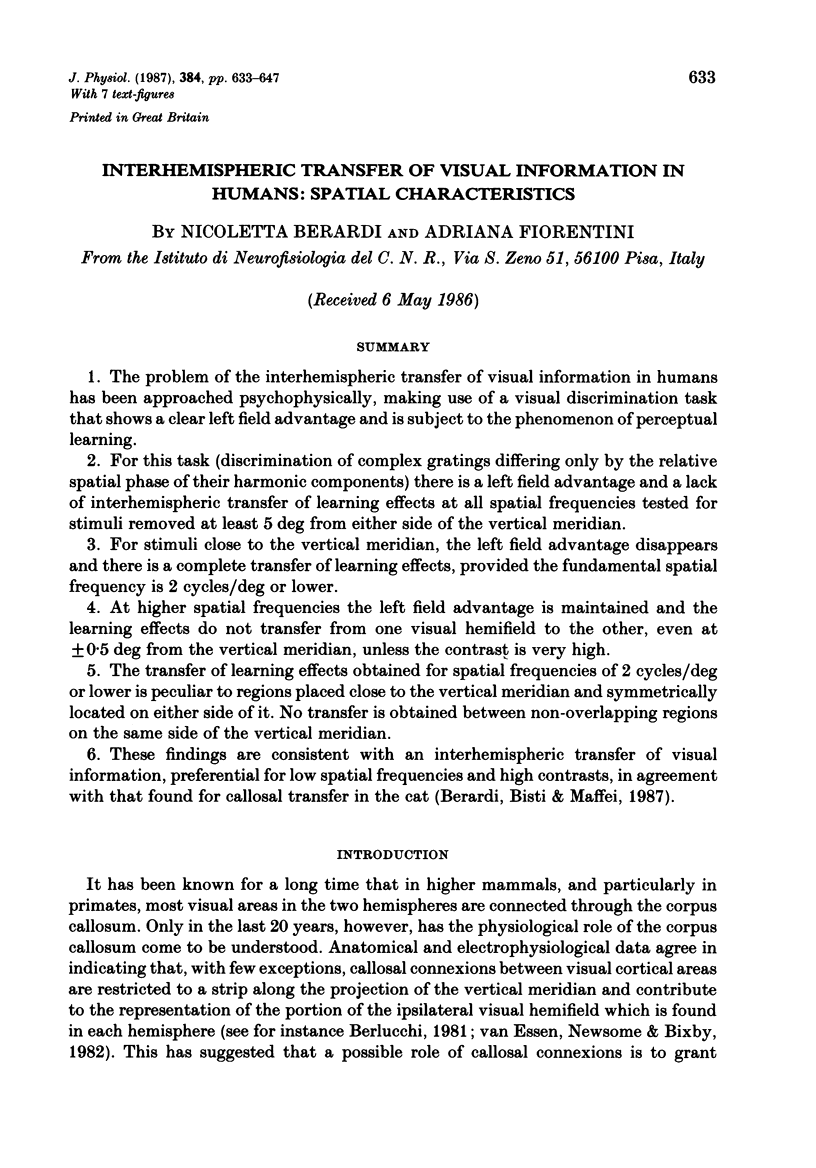
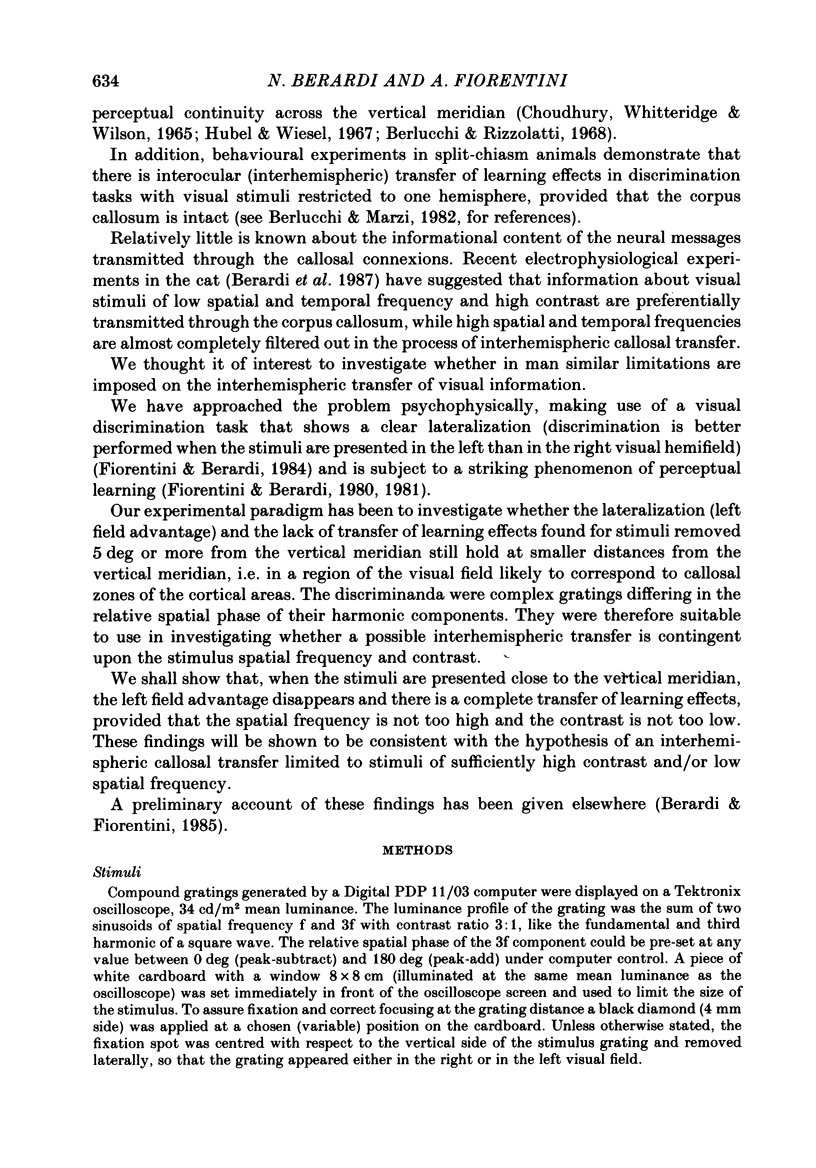
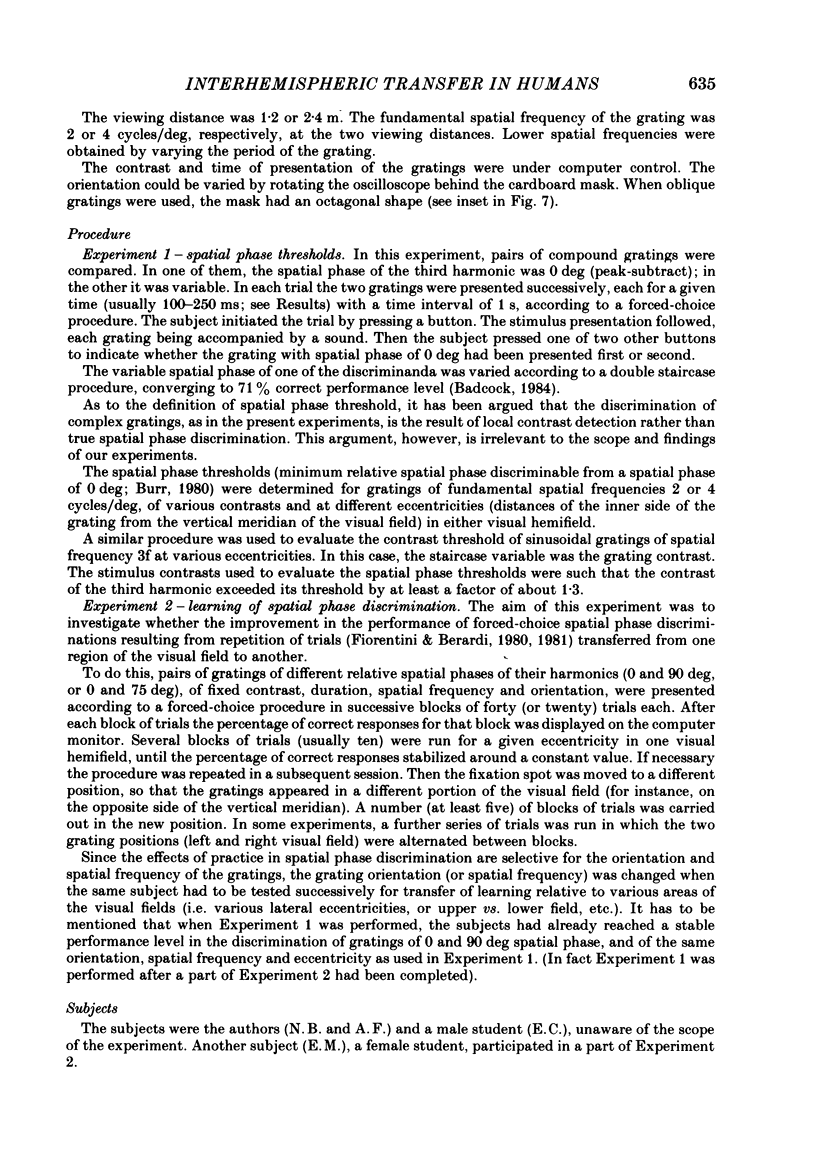
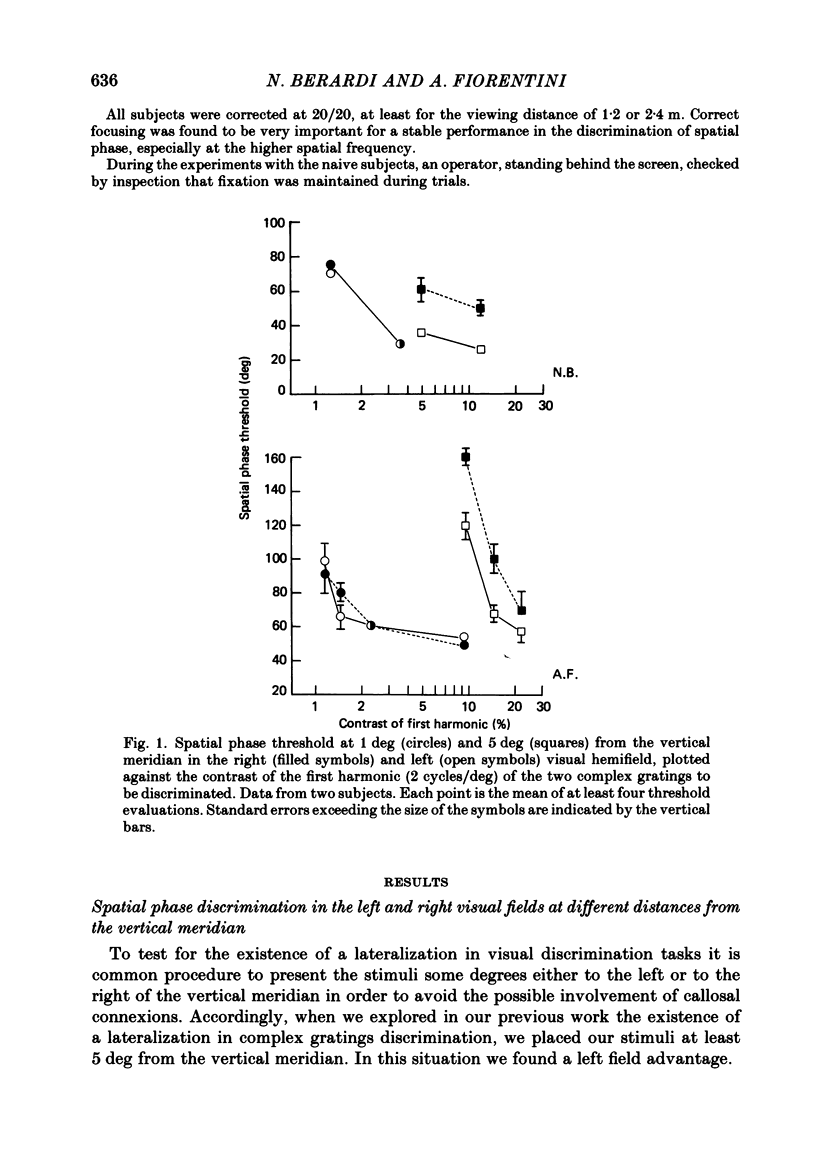
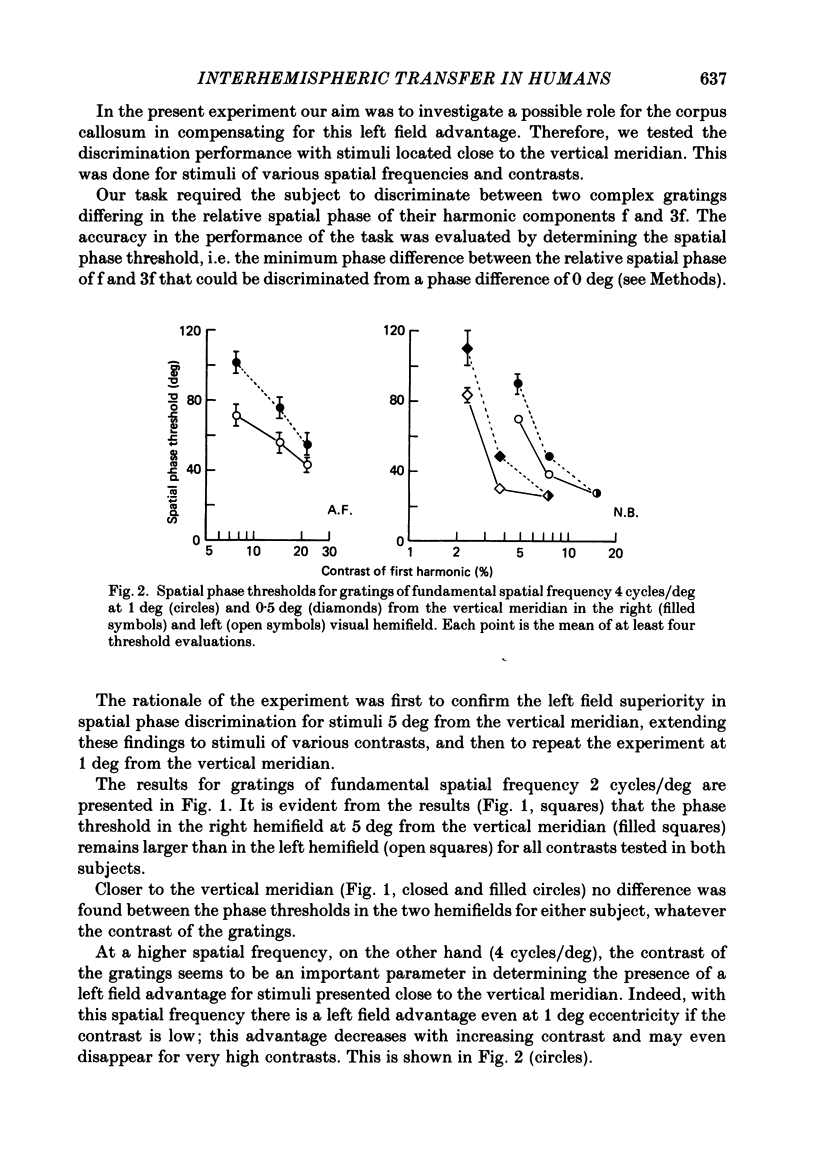
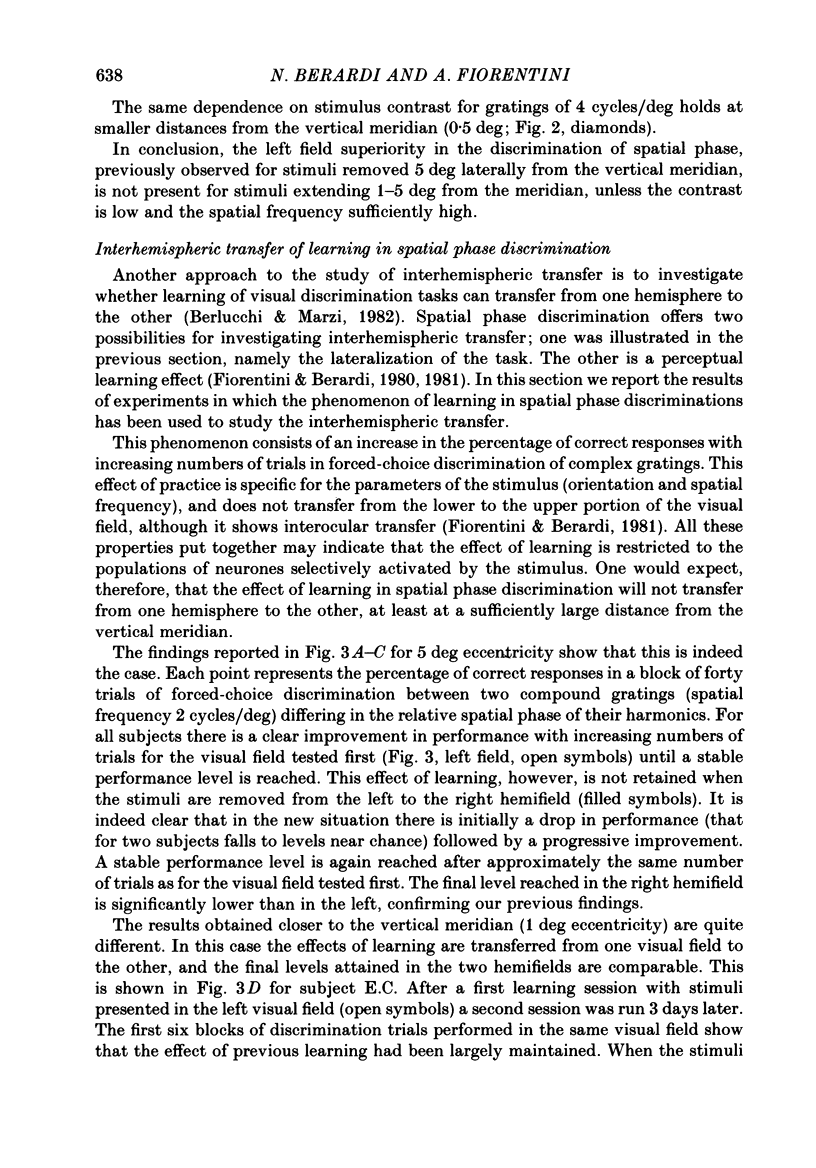
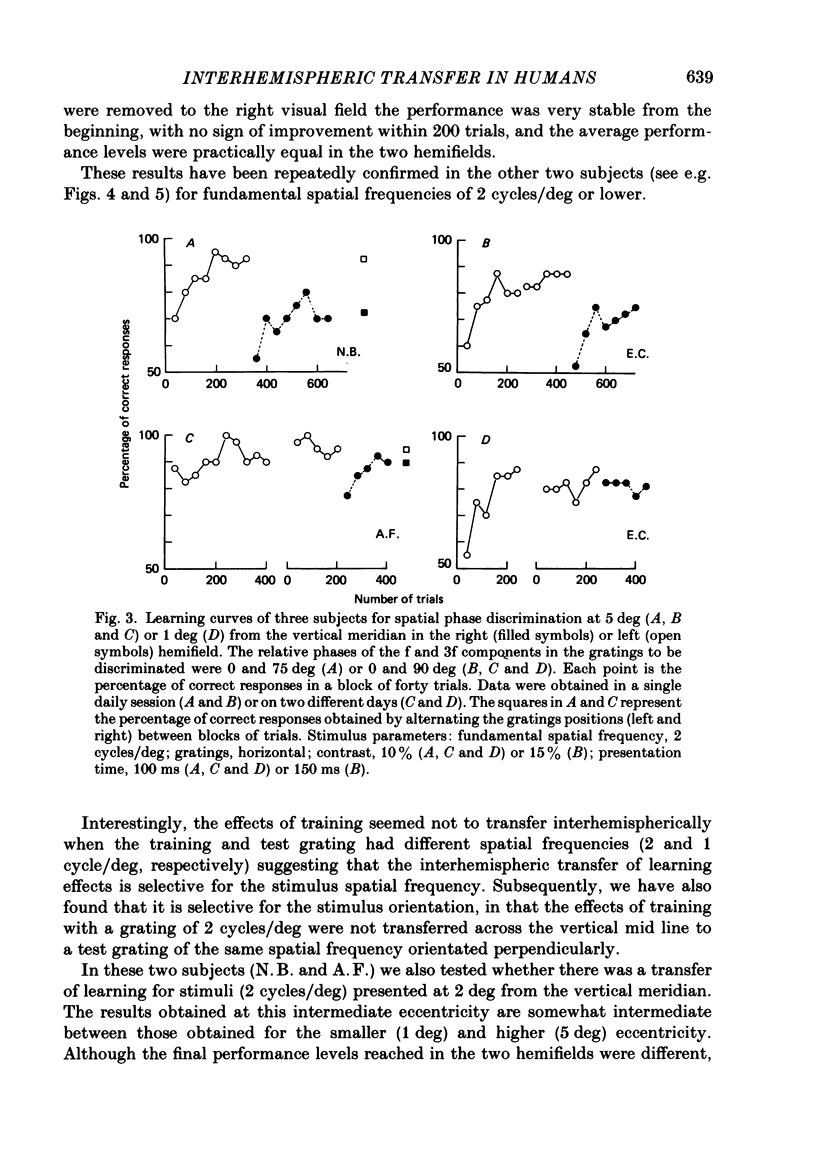
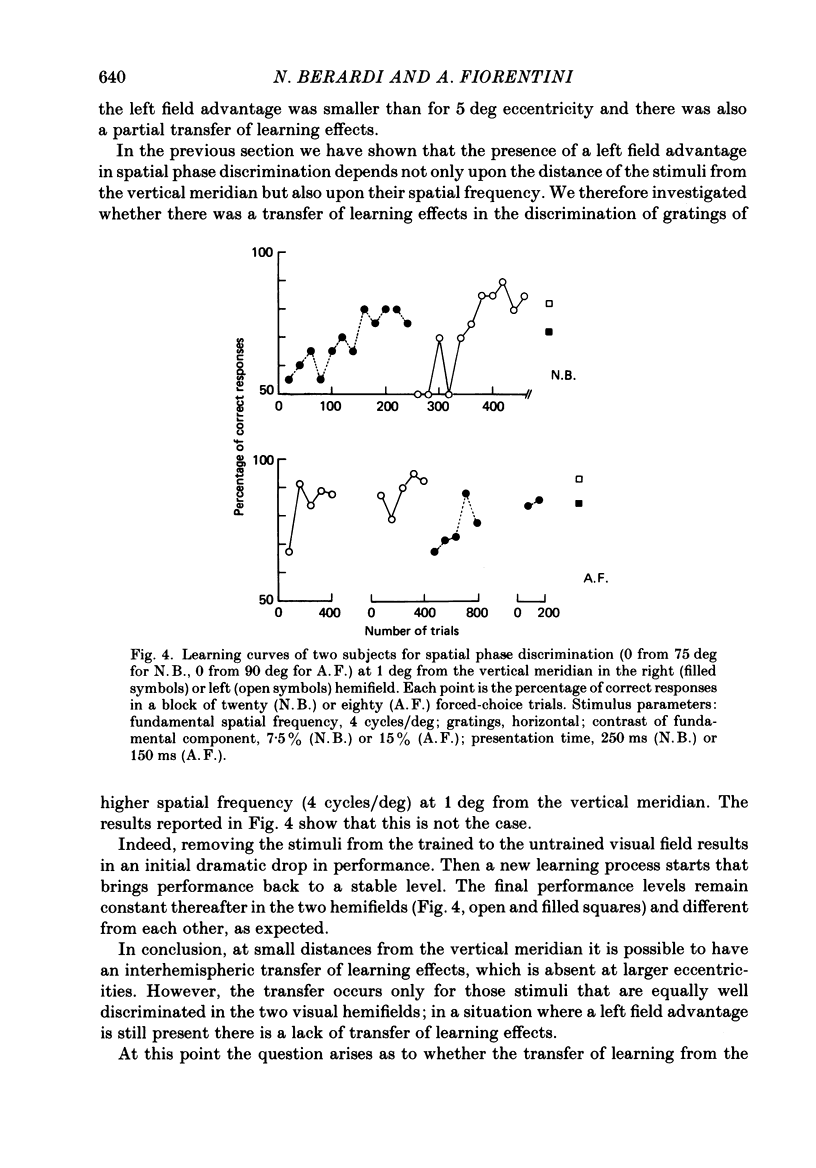
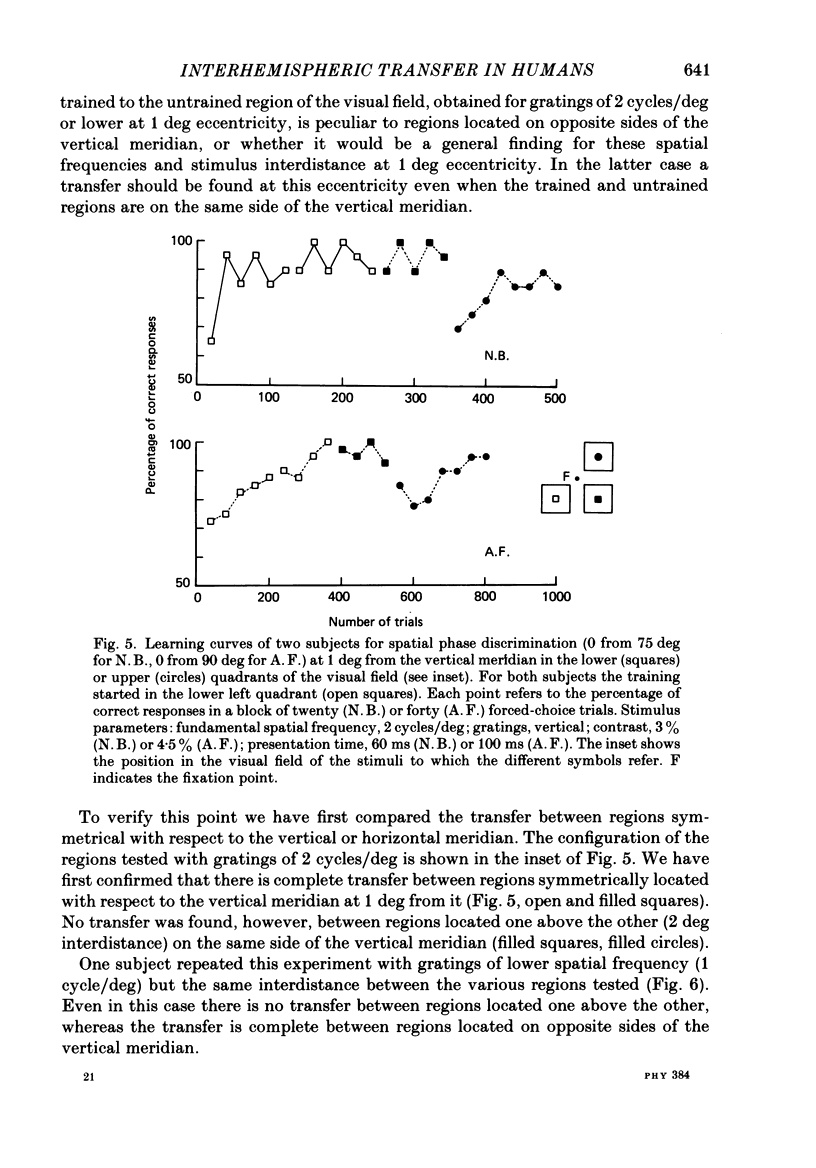
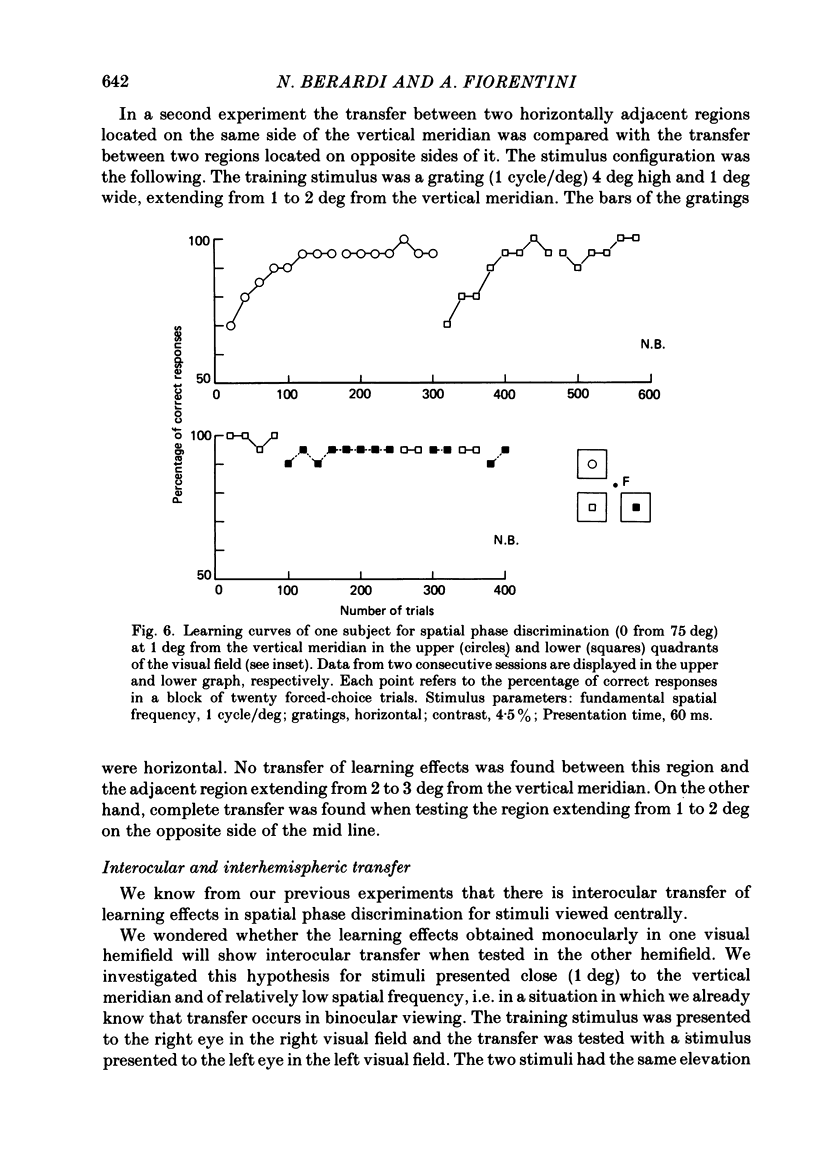
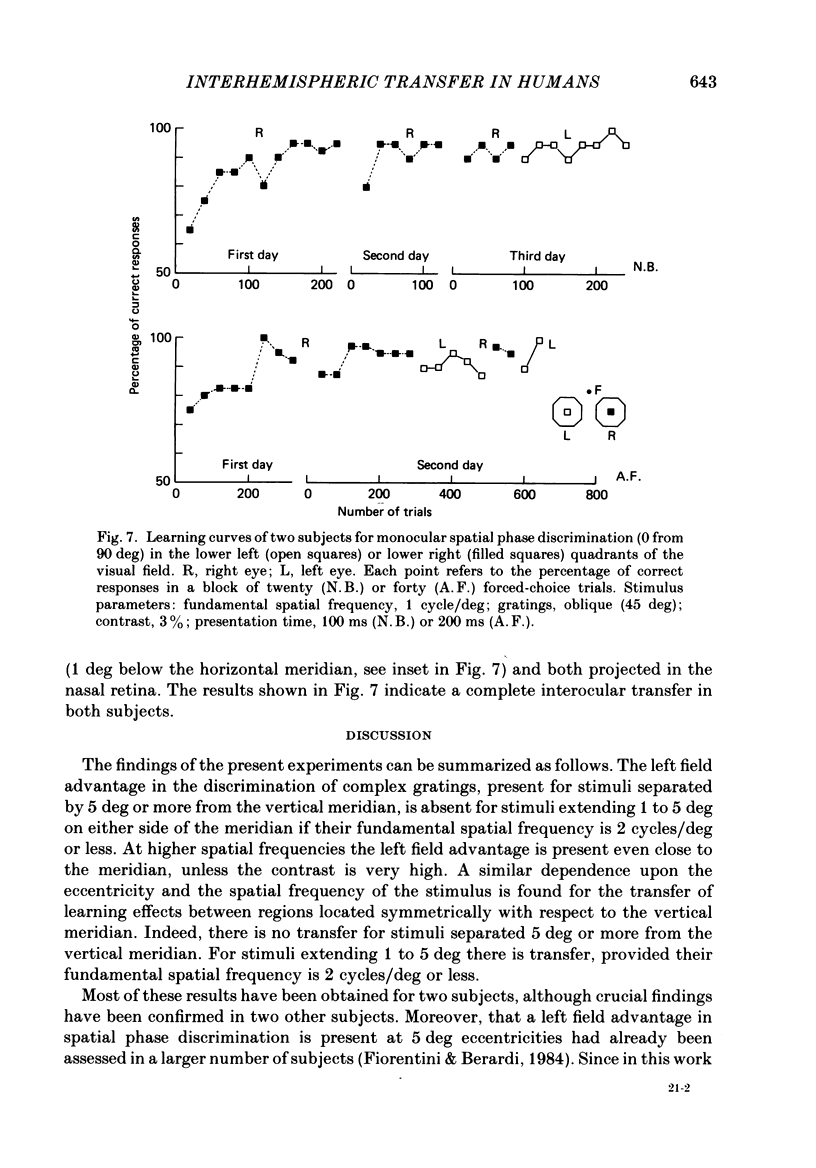
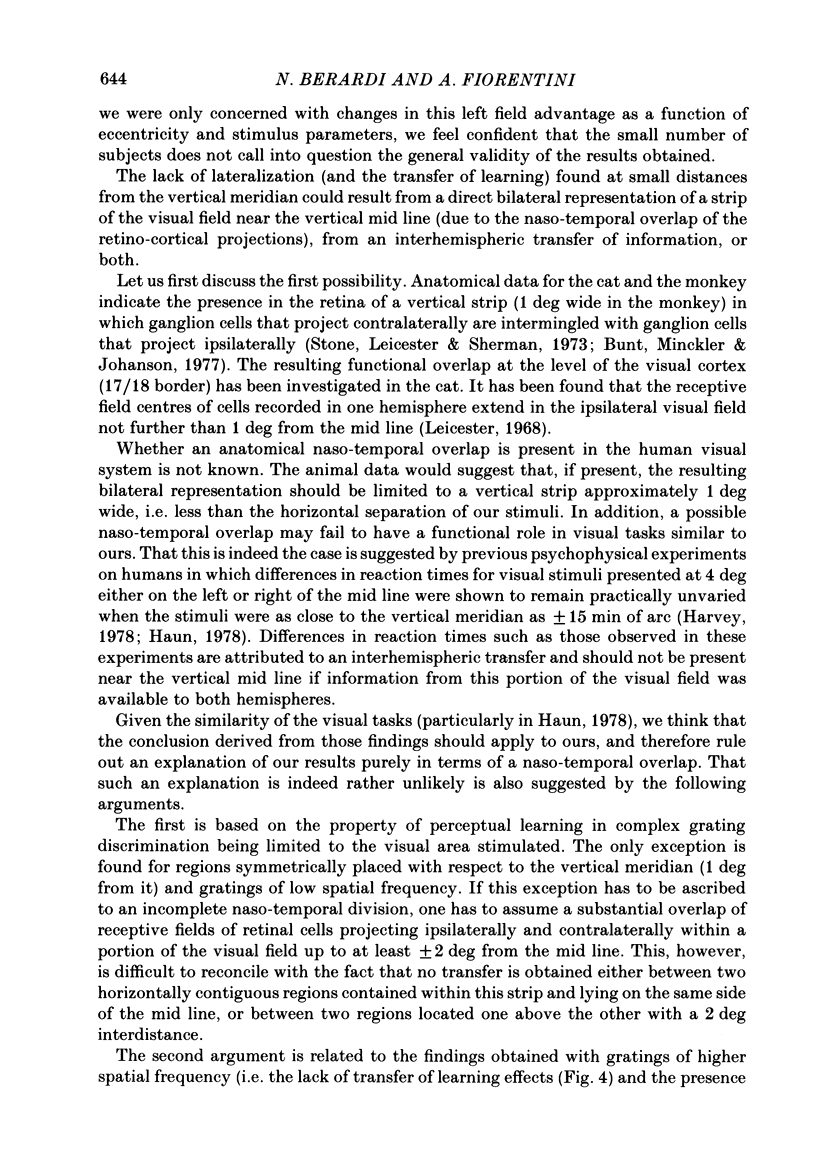
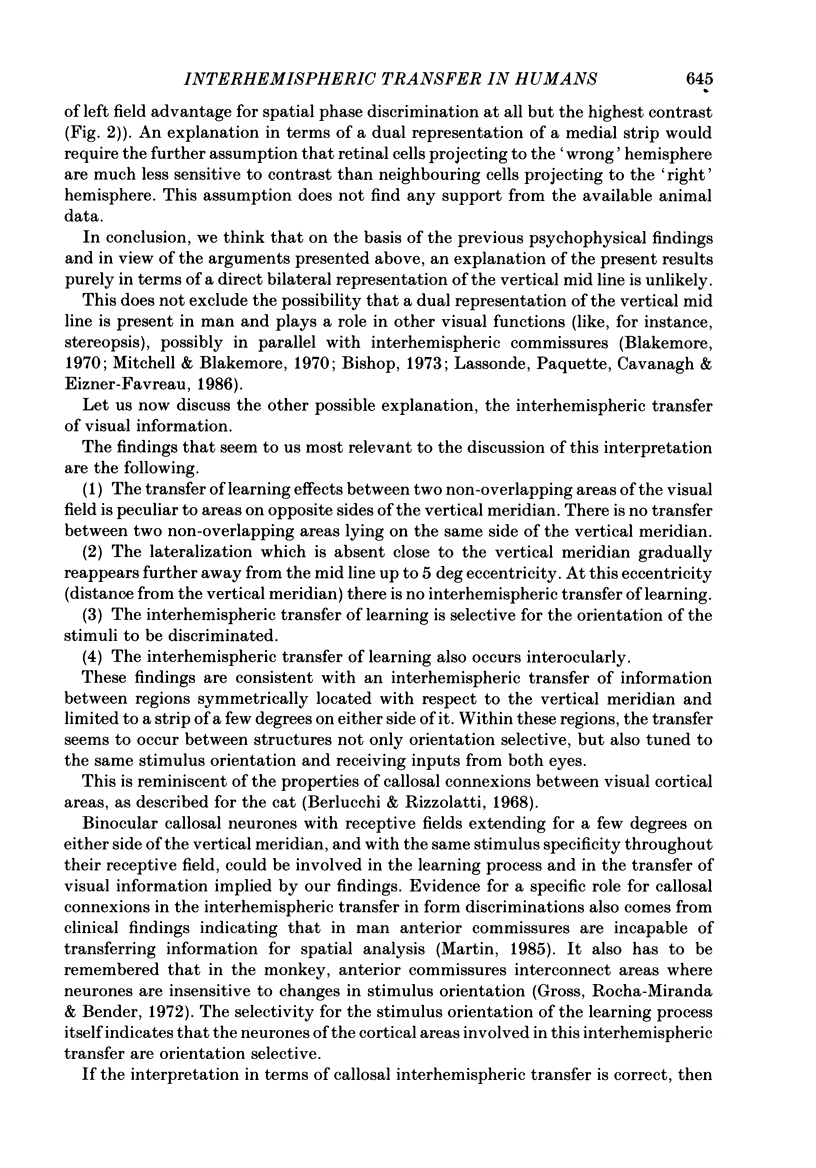
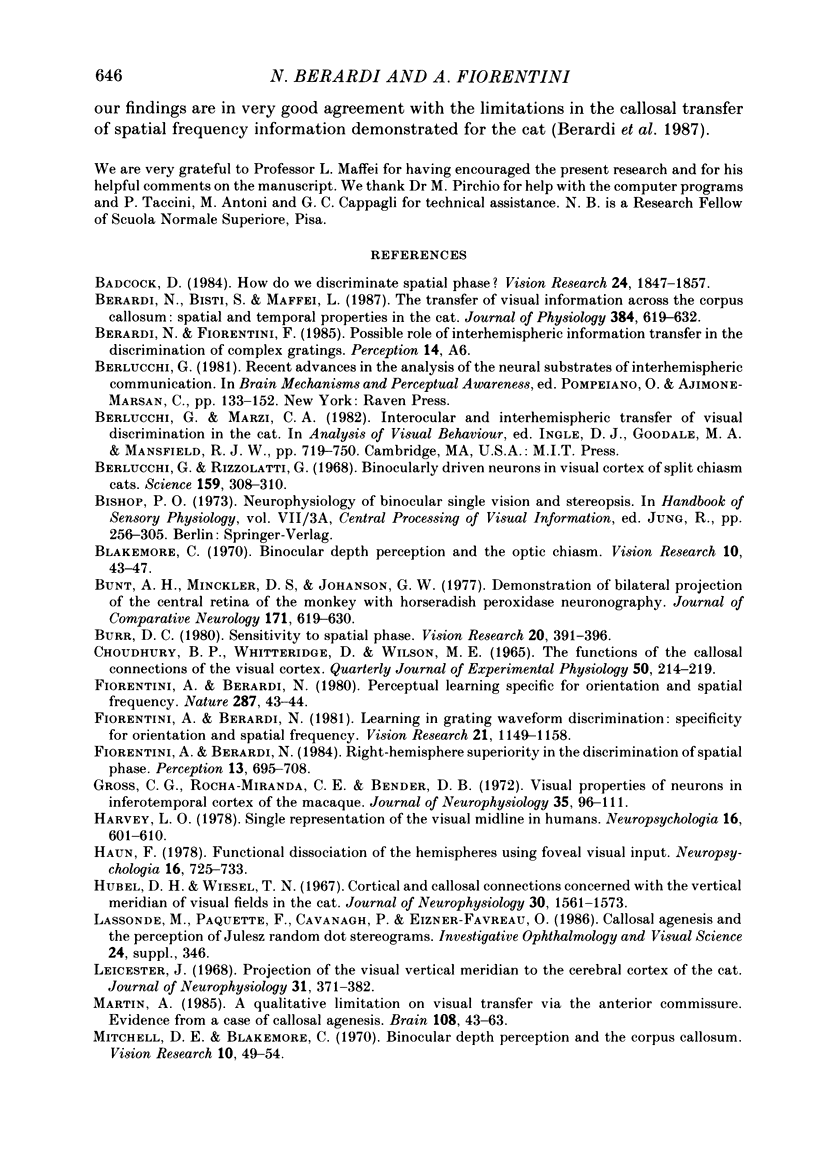
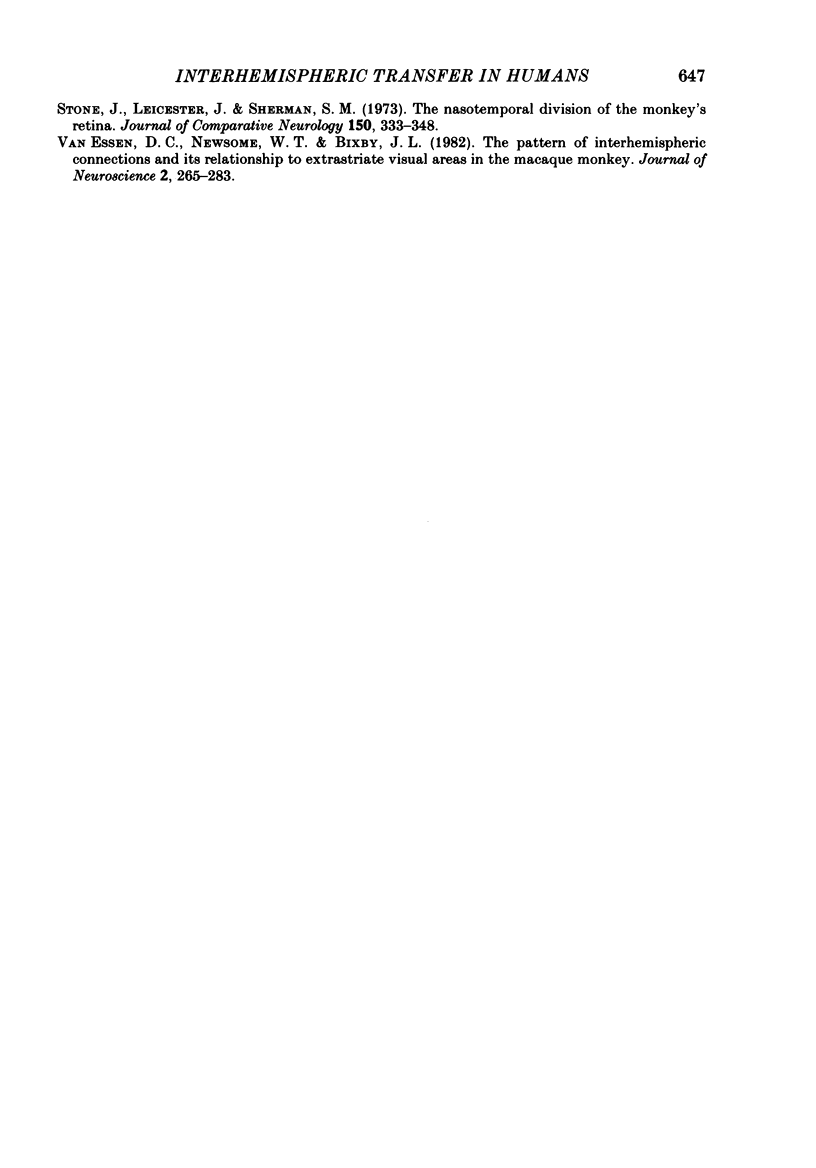
Selected References
These references are in PubMed. This may not be the complete list of references from this article.
- Badcock D. R. How do we discriminate relative spatial phase? Vision Res. 1984;24(12):1847–1857. doi: 10.1016/0042-6989(84)90017-8. [DOI] [PubMed] [Google Scholar]
- Berardi N., Bisti S., Maffei L. The transfer of visual information across the corpus callosum: spatial and temporal properties in the cat. J Physiol. 1987 Mar;384:619–632. doi: 10.1113/jphysiol.1987.sp016473. [DOI] [PMC free article] [PubMed] [Google Scholar]
- Berlucchi G., Rizzolatti G. Binocularly driven neurons in visual cortex of split-chiasm cats. Science. 1968 Jan 19;159(3812):308–310. doi: 10.1126/science.159.3812.308. [DOI] [PubMed] [Google Scholar]
- Blakemore C. Binocular depth perception and the optic chiasm. Vision Res. 1970 Jan;10(1):43–47. doi: 10.1016/0042-6989(70)90060-x. [DOI] [PubMed] [Google Scholar]
- Bunt A. H., Minckler D. S., Johanson G. W. Demonstration of bilateral projection of the central retina of the monkey with horseradish peroxidase neuronography. J Comp Neurol. 1977 Feb 15;171(4):619–630. doi: 10.1002/cne.901710412. [DOI] [PubMed] [Google Scholar]
- Burr D. C. Sensitivity to spatial phase. Vision Res. 1980;20(5):391–396. doi: 10.1016/0042-6989(80)90029-2. [DOI] [PubMed] [Google Scholar]
- CHOUDHURY B. P., WHITTERIDGE D., WILSON M. E. THE FUNCTION OF THE CALLOSAL CONNECTIONS OF THE VISUAL CORTEX. Q J Exp Physiol Cogn Med Sci. 1965 Apr;50:214–219. doi: 10.1113/expphysiol.1965.sp001783. [DOI] [PubMed] [Google Scholar]
- Fiorentini A., Berardi N. Learning in grating waveform discrimination: specificity for orientation and spatial frequency. Vision Res. 1981;21(7):1149–1158. doi: 10.1016/0042-6989(81)90017-1. [DOI] [PubMed] [Google Scholar]
- Fiorentini A., Berardi N. Perceptual learning specific for orientation and spatial frequency. Nature. 1980 Sep 4;287(5777):43–44. doi: 10.1038/287043a0. [DOI] [PubMed] [Google Scholar]
- Fiorentini A., Berardi N. Right-hemisphere superiority in the discrimination of spatial phase. Perception. 1984;13(6):695–708. doi: 10.1068/p130695. [DOI] [PubMed] [Google Scholar]
- Gross C. G., Rocha-Miranda C. E., Bender D. B. Visual properties of neurons in inferotemporal cortex of the Macaque. J Neurophysiol. 1972 Jan;35(1):96–111. doi: 10.1152/jn.1972.35.1.96. [DOI] [PubMed] [Google Scholar]
- Harvey L. O., Jr Single representation of the visual midline in humans. Neuropsychologia. 1978;16(5):601–610. doi: 10.1016/0028-3932(78)90088-x. [DOI] [PubMed] [Google Scholar]
- Haun F. Functional dissociation of the hemispheres using foveal visual input. Neuropsychologia. 1978;16(6):725–733. doi: 10.1016/0028-3932(78)90007-6. [DOI] [PubMed] [Google Scholar]
- Hubel D. H., Wiesel T. N. Cortical and callosal connections concerned with the vertical meridian of visual fields in the cat. J Neurophysiol. 1967 Nov;30(6):1561–1573. doi: 10.1152/jn.1967.30.6.1561. [DOI] [PubMed] [Google Scholar]
- Leicester J. Projection of the visual vertical meridian to cerebral cortex of the cat. J Neurophysiol. 1968 May;31(3):371–382. doi: 10.1152/jn.1968.31.3.371. [DOI] [PubMed] [Google Scholar]
- Martin A. A qualitative limitation on visual transfer via the anterior commissure. Evidence from a case of callosal agenesis. Brain. 1985 Mar;108(Pt 1):43–63. doi: 10.1093/brain/108.1.43. [DOI] [PubMed] [Google Scholar]
- Mitchell D. E., Blakemore C. Binocular depth perception and the corpus callosum. Vision Res. 1970 Jan;10(1):49–54. doi: 10.1016/0042-6989(70)90061-1. [DOI] [PubMed] [Google Scholar]
- Stone J., Leicester J., Sherman S. M. The naso-temporal division of the monkey's retina. J Comp Neurol. 1973 Aug;150(3):333–348. doi: 10.1002/cne.901500306. [DOI] [PubMed] [Google Scholar]
- Van Essen D. C., Newsome W. T., Bixby J. L. The pattern of interhemispheric connections and its relationship to extrastriate visual areas in the macaque monkey. J Neurosci. 1982 Mar;2(3):265–283. doi: 10.1523/JNEUROSCI.02-03-00265.1982. [DOI] [PMC free article] [PubMed] [Google Scholar]


